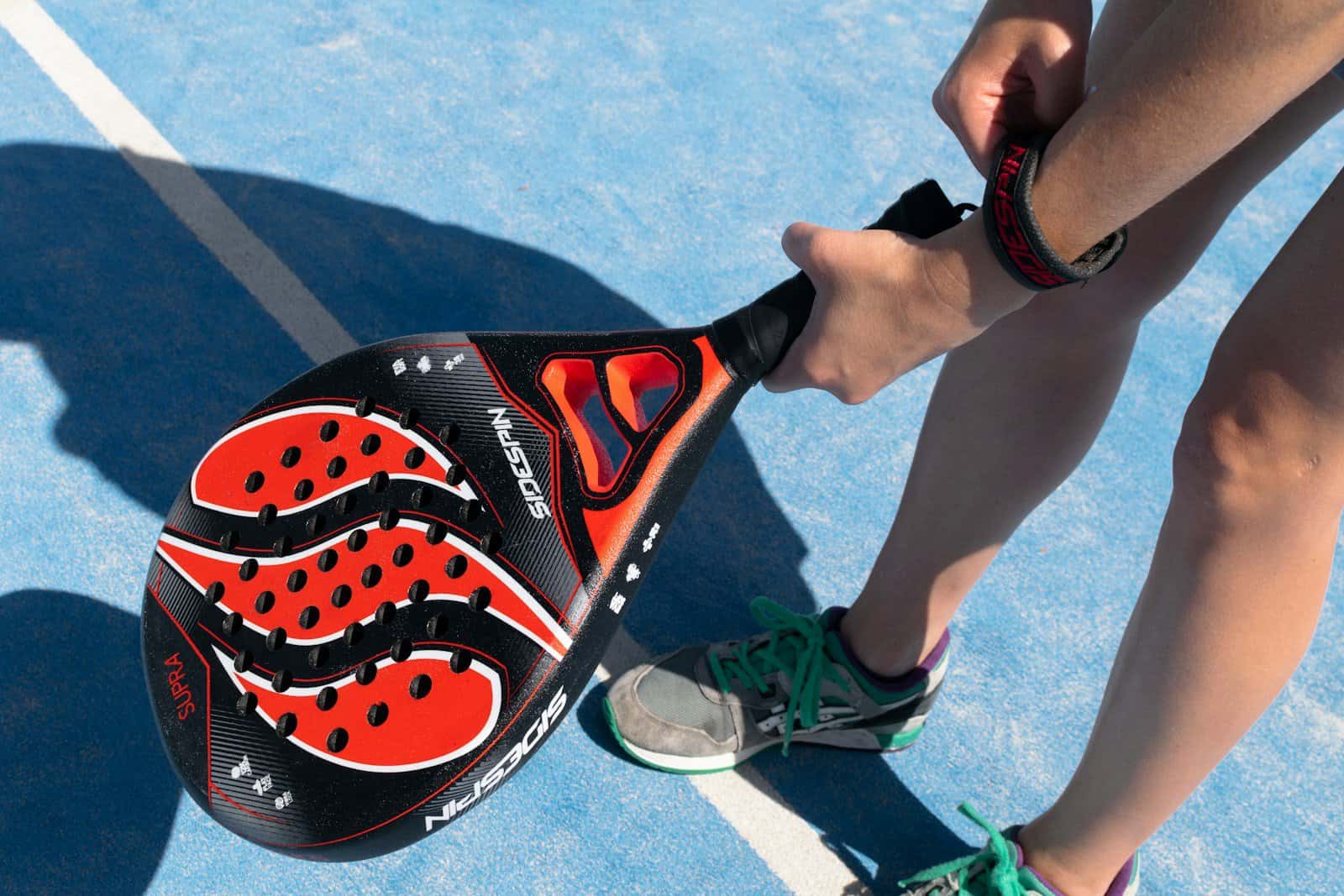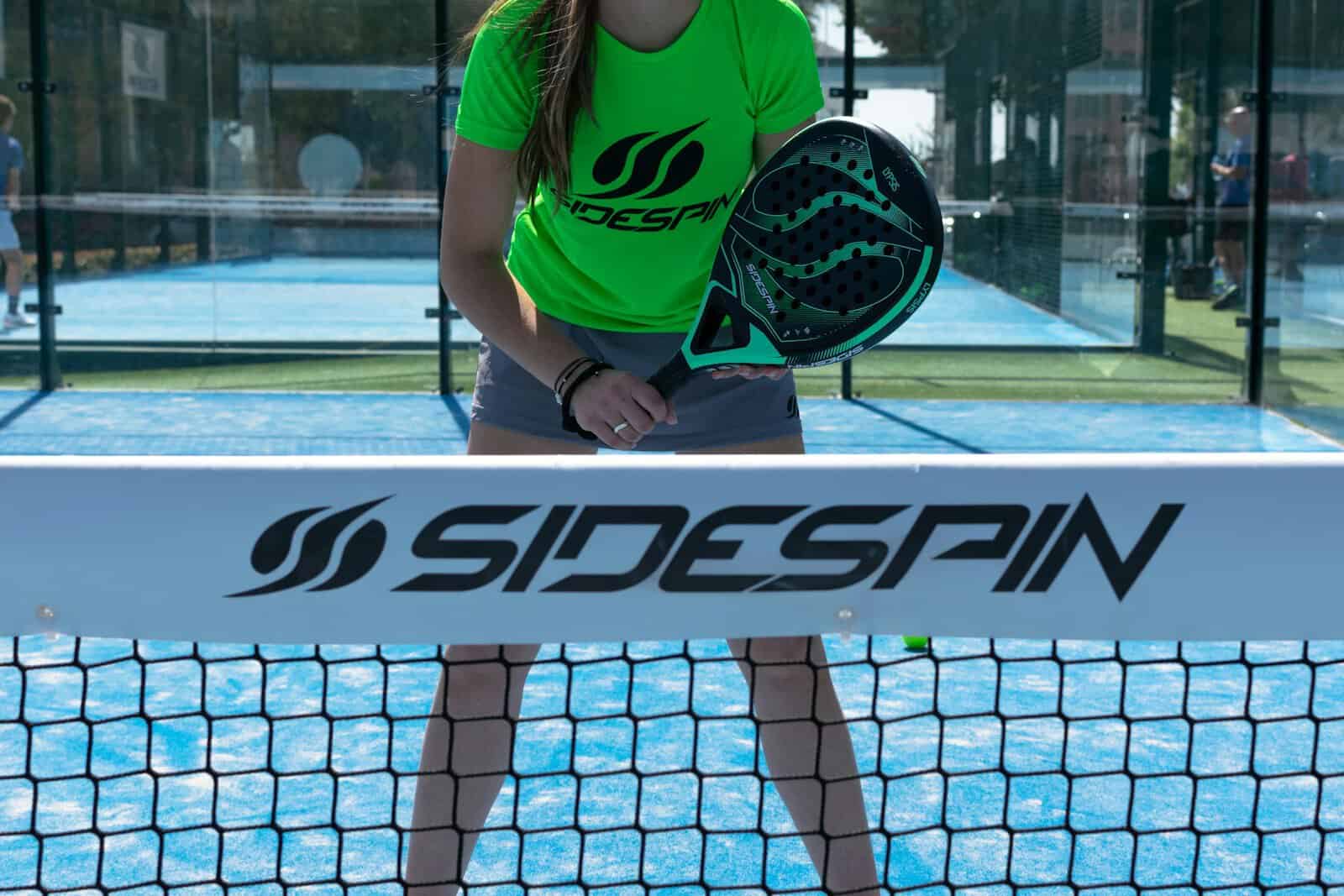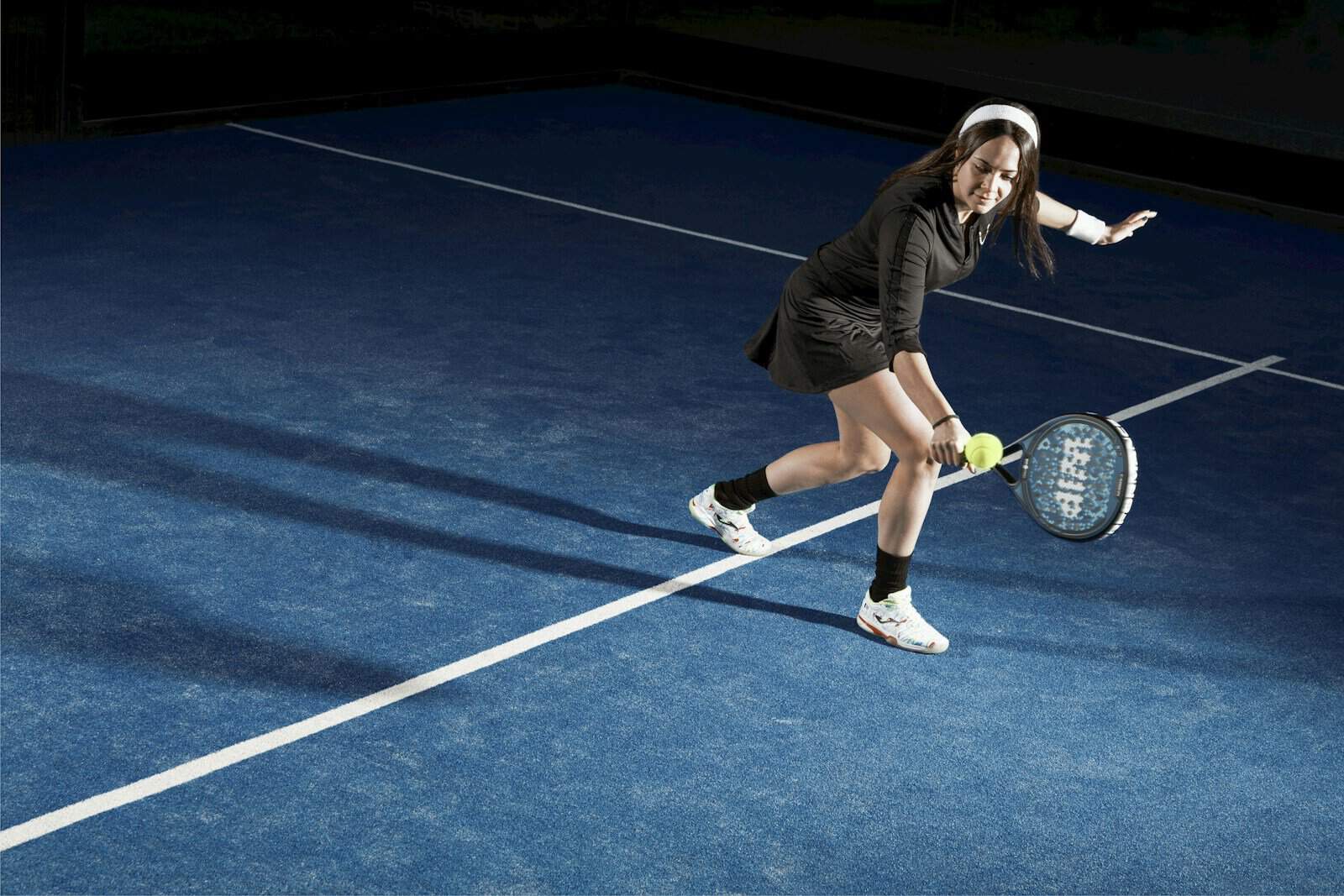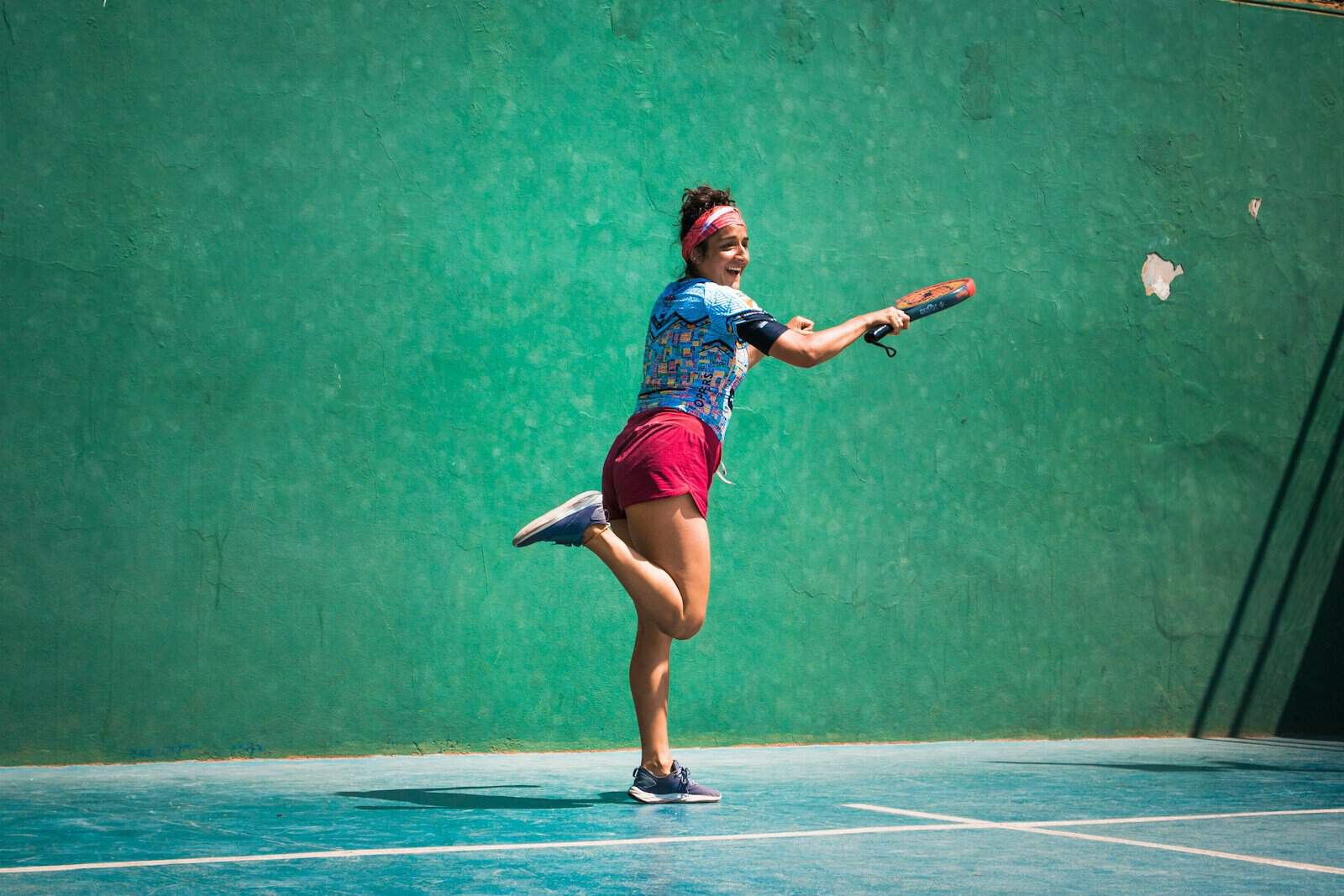Padel is an exciting racquet sport that combines elements of tennis and squash. One of the most thrilling shots in padel is the vibora. This unique move can give you an edge on the court and leave your opponents scrambling.
The vibora is a powerful overhead shot played from the backhand side with heavy side spin, causing the ball to bounce off the back wall at an unpredictable angle. It’s a key weapon in a skilled player’s arsenal, often used to turn defence into attack. When executed well, the vibora can be hard for your opponents to return effectively.
To hit a vibora, you must position yourself correctly and use the right technique. It involves striking the ball at about head height with a slicing motion. With practice, you can learn to control the spin and placement of your vibora shots. This skill can help you gain control of the court and put pressure on your opponents.
The Basics of Padel
The Vibora Shot Explained
The vibora shot is a powerful and deceptive technique in padel. It combines speed, spin, and precision to catch opponents off guard.
Defining the Vibora
The vibora shot is a unique aerial shot in padel. You hit the ball with a quick wrist flick, creating side spin. This spin makes the ball’s path unpredictable. The name ‘vibora’ means ‘viper’ in Spanish, reflecting the shot’s snake-like movement.
To play a vibora:
- Position yourself near the net
- Hold your racket at shoulder height
- Use a short backswing
- Flick your wrist at impact
The vibora is best used when the ball is above net height. It’s an aggressive shot that can catch your opponents off balance.
Vibora Versus Other Shots
The vibora differs from other aerial shots in padel. Unlike a smash, which relies on power, the vibora uses spin and deception. The bandeja shot is similar, but you hit it from underneath the ball.
Key differences:
- Vibora: Side spin, quick wrist action
- Smash: Overhead power shot
- Bandeja: Defensive, hit from below
The vibora’s unique spin makes it harder for opponents to return. It’s a versatile shot that can be both offensive and defensive.
Strategic Importance of Vibora in a Match
The vibora is a valuable weapon in your padel arsenal. It can help you:
- Surprise your opponents
- Change the pace of play
- Create difficult angles
Using the vibora effectively can turn defence into attack. When your opponents are at the net, a well-placed vibora can force them back. This gives you a chance to move forward and take control of the point.
The vibora’s unpredictable trajectory makes it hard to counter. By mastering this shot, you add an element of surprise to your game. This can be crucial in tight matches where every point counts.
Technical Aspects of the Vibora
The vibora shot in padel requires precise technique and coordination. It combines power, spin, and accuracy to create a formidable offensive weapon.
Grip and Stance
Your grip for the vibora should be continental or eastern. Hold the paddle firmly but not too tightly. This allows for better wrist control and spin generation.
Your stance is crucial. Position yourself sideways to the net, with your feet shoulder-width apart. Keep your knees slightly bent for better balance and explosiveness.
Face the side wall, not the net. This positioning helps you generate more power and control the ball’s direction.
Wrist Action and Swing
The wrist plays a key role in the vibora shot. Start with your wrist cocked back. As you swing, snap your wrist forward to create spin and power.
Your swing should be compact and controlled. Don’t take a big backswing. Instead, focus on a quick, sharp forward motion.
Use your non-dominant hand to point at the ball. This helps with timing and accuracy.
Contact Point and Follow-Through
Contact the ball at or slightly above head height. This allows you to hit down on the ball, creating topspin and keeping it low after the bounce.
Hit the ball off-centre, towards the edge of your paddle. This generates side-spin, making the ball curve after hitting the side wall.
Your follow-through should be short and across your body. Finish with your paddle near your opposite shoulder.
Timing is crucial. Hit the ball at the peak of its bounce for optimal control and power.
Vibora Tactics and Variations
The vibora is a versatile shot in padel that can be adapted to various situations. Players can use different tactics and variations to keep opponents guessing and gain an advantage on the court.
Positioning and Court Awareness
Your position on the court is crucial when executing a vibora. Stand close to the net, about 2-3 metres away, to maximise your attacking potential.
Keep an eye on your opponents’ positions. If they’re at the back of the court, aim your vibora towards the corners to make it harder for them to return.
When your opponents are at the net, try a low vibora that bounces just over the net. This can force them to hit an awkward volley.
Be ready to move after your shot. A well-placed vibora can set you up for an easy volley or smash if your opponents manage to return it.
Adjusting the Vibora for Different Court Surfaces
Court surfaces can affect how your vibora behaves. On faster courts, reduce your power and focus on spin to keep the ball under control.
For slower surfaces, you can hit with more power. The ball won’t travel as quickly, giving you more time to prepare for the next shot.
Play a low contact vibora on all surfaces for consistency. Hit the ball at head height to keep it low after the first bounce.
Practice your vibora on different court types to get a feel for how the ball reacts. This will help you adjust your technique as needed.
Employing Spin Variations
Spin is a key element of the vibora. Sidespin is crucial for a successful shot. It makes the ball curve in the air and bounce unpredictably off the wall.
To add sidespin, brush the side of the ball as you hit it. The more spin you add, the more the ball will curve.
Try varying the amount of spin you use. A heavy spin vibora can be effective, but mixing in shots with less spin can catch your opponents off guard.
Experiment with lateral spin as well. This can make the ball move sideways after it hits the wall, making it even trickier for your opponents to return.
Executing the Perfect Vibora
The vibora is a powerful and precise shot in padel that requires skill and practice. It combines elements of aggression, defence, and finesse to create a versatile weapon in your arsenal.
Advanced Techniques for Spin and Power
To master the vibora, focus on your grip and body position. Hold the racket firmly but not too tight. Stand sideways with your feet shoulder-width apart.
As you swing, rotate your body and use your core muscles. This adds power to your shot. Aim to hit the ball at its highest point for maximum effect.
To add spin, brush the back of the ball with your racket. This creates a slicing motion that makes the ball dip and swerve. Experiment with different contact points to vary the spin and keep your opponents guessing.
Practice hitting targets on the court to improve your accuracy. Start close to the net and gradually move back as you gain confidence.
Vibora in Offensive and Defensive Plays
The vibora shines in both attack and defence. When attacking, use it to put pressure on your opponents. Aim for the corners of the court or target the weaker player.
In defensive situations, the vibora can turn the tables quickly. When facing a lob, step back and prepare for a vibora. This aggressive response can catch your opponents off guard.
Mix up your shots to keep the other team guessing. Alternate between viboras, bandejas, and smashes. This variety makes it harder for them to anticipate your next move.
Remember, placement is key. A well-placed vibora is often more effective than a powerful but predictable shot.
Common Pitfalls and How to Avoid Them
One common mistake is rushing the shot. Take your time to set up properly. This ensures better control and accuracy.
Don’t always go for maximum power. A softer, more precise vibora can be just as effective. Focus on placement over raw strength.
Avoid hitting the ball too flat. This reduces spin and makes the shot easier to return. Instead, brush the ball to create slice.
Watch your footwork. Poor positioning can lead to weak or inaccurate shots. Stay light on your feet and be ready to adjust your stance.
Lastly, don’t become predictable. Mix up your viboras with other shots to keep your opponents on their toes.
Practical Tips for Improving Your Vibora
The vibora is a key shot in padel that requires skill and practice. To boost your performance, focus on targeted drills, physical conditioning, and mental preparation.
Drills and Practice Routines
Start by mastering the basic vibora technique. Stand sideways to the net and practice the slicing motion without a ball. Once comfortable, add a ball tossed by a partner.
Try these drills:
- Wall practice: Hit viboras against a wall, aiming for specific targets.
- Rapid-fire drills: Have a partner feed you lobs quickly to improve your reaction time.
- Cross-court challenges: Aim for the back corners to increase accuracy.
Mix up your practice with both low and high contact viboras. Spend at least 15-20 minutes on vibora practice during each training session.
Physical Conditioning and Strength Training
A strong vibora requires good upper body strength and core stability. Include these exercises in your fitness routine:
- Shoulder rotations with resistance bands
- Medicine ball throws for explosive power
- Planks and Russian twists for core strength
Work on your flexibility too. Stretches for your shoulders, back, and wrists will help prevent injuries and improve your range of motion.
Don’t forget footwork. Quick feet are crucial for getting into the right position. Try ladder drills and short sprints to boost your agility on the court.
Mental Preparation and Focus
A strong mindset is key to executing a perfect vibora under pressure. Practise visualisation techniques. Picture yourself hitting successful viboras in match situations.
Develop a pre-shot routine to help you stay focused. This might include taking a deep breath and visualising your target area.
Work on your concentration during practice. Set specific goals for each session, like hitting 10 successful viboras in a row. This will help you stay focused and motivated.
Remember, staying calm under pressure is crucial. Try deep breathing exercises or mindfulness techniques to manage match stress and maintain your composure when attempting viboras in crucial moments.
External Factors Affecting the Vibora Shot
The vibora shot in padel can be influenced by various external elements. These factors can impact your technique and effectiveness when executing this unique overhead smash.
Weather Conditions and Their Impact
Cold temperatures can make the ball less bouncy, affecting your vibora’s power and spin. In winter months, you might need to adjust your technique to compensate for the ball’s reduced responsiveness.
Humidity plays a crucial role too. High humidity can make the ball heavier and slower, requiring more force to achieve the same effect as in drier conditions. On humid days, you may need to hit the ball with more power to get the desired slice and speed.
Wind is another key factor. A strong breeze can alter the ball’s trajectory, making it harder to place your vibora in padel accurately. You’ll need to adjust your aim and power based on wind direction and strength.
Adapting to Opponent Strategies
Your opponents’ playing style can greatly influence how you execute your vibora. If they consistently stay back, you might have more opportunities to use this aggressive shot.
However, if your rivals are quick to rush the net, you may need to adapt your vibora technique. In such cases, you could opt for a low contact vibora to keep the ball down and make it harder for them to volley.
Pay attention to your opponents’ positioning. If they tend to favour one side of the court, you can use your vibora to target the opposite corner, catching them off guard.




